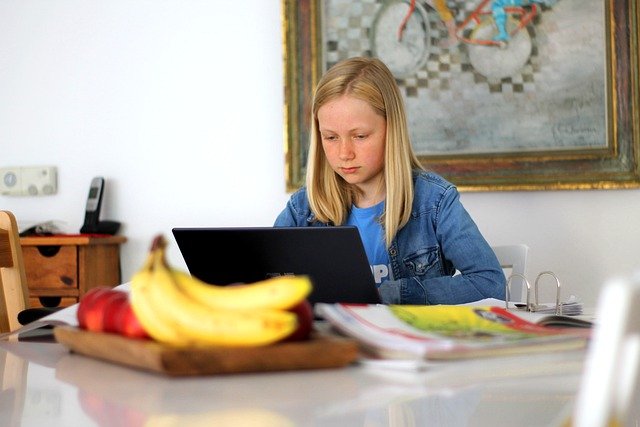 Transitioning from in-person learning to remote learning can be exciting and challenging for families. Setting a plan and expectations can help this transition when it occurs. Four areas that you can help organize for your learner include the daily schedule, location of learning, learning supplies, and learning materials.
Transitioning from in-person learning to remote learning can be exciting and challenging for families. Setting a plan and expectations can help this transition when it occurs. Four areas that you can help organize for your learner include the daily schedule, location of learning, learning supplies, and learning materials.
1. Schedule
Know, print, post, and set the schedule for the day. To ensure punctual attendance to synchronous class time, the class schedule needs to be known. Schedule class times into your and your child’s calendar with a reminder. Print and post the daily schedule in your child’s workspace, your workspace, and at the family command center. This can help keep everyone on schedule.
2. Location
Help your learner select a good location for learning at home. A space that is quiet, well-lit, promotes creativity and productivity. For some learners, they may focus well sitting at the kitchen table. Other learners may need a secluded place to effectively learn. You may need to consider a station in a bedroom or other less traveled space.
Doing a quick declutter of the learning space will help with focus and productivity. If learning is happening in their bedroom, have your child make their bed, place dirty laundry in the basket, and limit the toys and distractions in the space. The same concept applies to the dining room, kitchen, and learning nook. Your student may need to change locations throughout their workday. A change of scenery, lighting, and distractions is good. Maintain a consistent location where they will keep their supplies and materials.
3. Supplies
Equip your learner with the supplies they will need to complete their work. These materials are very similar to what they have available at school. Ask your child and your child’s teacher what supplies they use daily at school. Have a simple selection of these materials at your learner’s workspace. Keep in mind their age and learning level. A young learner may need some sharp pencils, an eraser, a selection of markers, and some paper. An older learner may need a calculator, paper, charging cable, a mouse with extra batteries, and a headset to keep their day going.
A printer, stock of extra ink, and paper will also be necessary when physical documents are needed. Make sure everyone’s computers and learning devices are set up to the Wi-Fi and printer before the day begins. Remove any extra supplies that may act as a distraction to learning.
4. Materials
When learning transitions to at-home, learning materials will need to be prepared and available. Teachers may share the learning materials with you and/or your child.
Have the materials available and ready to go in the workspace by the start of the workday. This will help avoid frantic searching for materials or bottleneck backups at the printer throughout the day (you know this is when the ink runs out and the paper jams). Classroom learning links should be open and waiting on internet browsers to ensure timely attendance to meeting times.
Being prepared and having a plan for a shift to, or from, remote learning can help your learner succeed through the transition. Organizing these four areas, schedule, location, supplies, and materials will help with effective learning from home.
If creating a workspace is overwhelming for you and your learning, Top Shelf Home Organizing can help. Jayme would love to talk about creating a learning space in your home.
